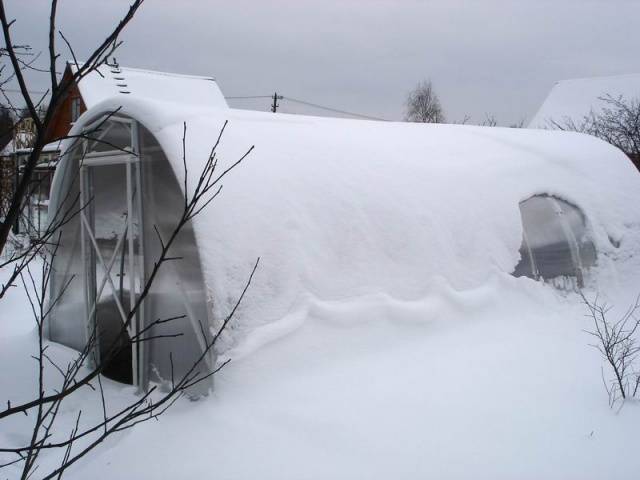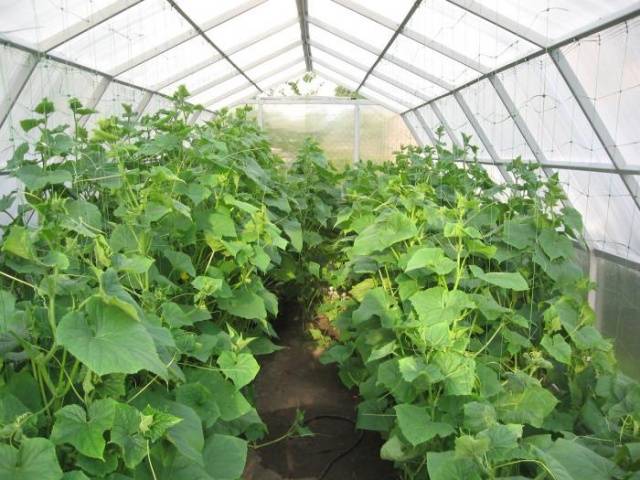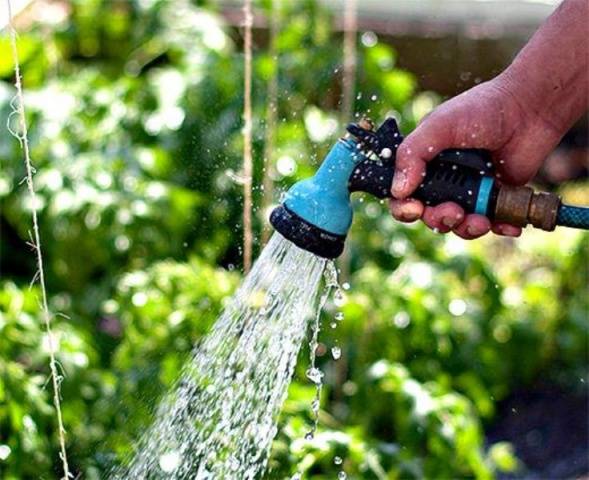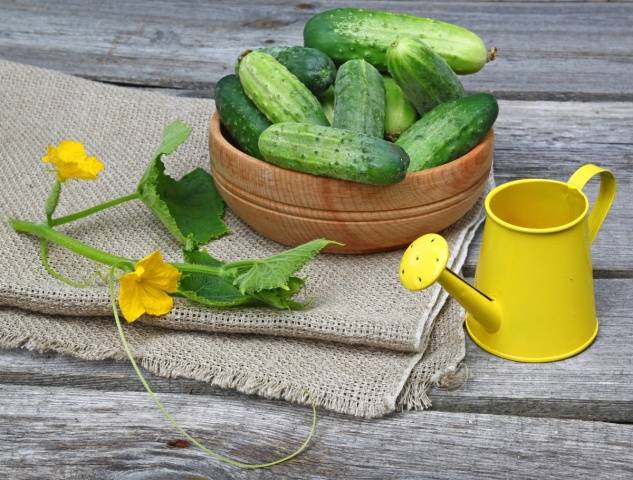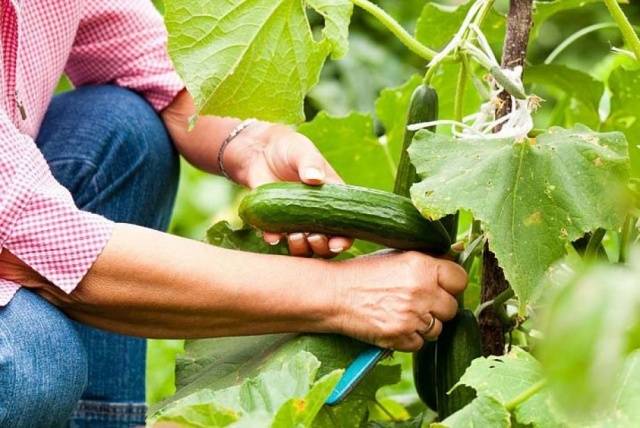Content
Vegetable growing in greenhouses is becoming more popular every year. This is noticeable in the number of new greenhouses. With the popularity of cucumber as a crop, it is necessary to be well versed in the process of growing various varieties. Today we will talk about early cucumbers... These varieties have become very popular nowadays, as many gardeners try to grow crops twice a season.
Growing cucumbers in a greenhouse
Preparation for planting cucumbers in the greenhouse does not begin in spring, but in early autumn. This process includes:
- cleaning the greenhouse from leaves and other residues;
- remove weeds;
- disinfect the soil;
- mineral fertilizers and sawdust are applied to the soil.
Various solutions are used for disinfection, of which there are many on sale. As a fertilizer, you can successfully use superphosphate and potassium chloride. Now you can form the beds and leave greenhouse before winter. It is also necessary to work during this period. If snow accumulates in the greenhouse, it must be removed.
Clearing the snow will allow the soil to freeze sufficiently. This is necessary to fight:
- with fungi and viruses;
- with soil insects;
- with diseases.
You can return to your greenhouse in early spring. You will have to disinfect the soil again, and then dig in the soil and form the beds. Everything is ready for planting cucumbers. Which variety to choose, it's up to you, early ripening cucumbers are considered one of the most bought.
Variety selection
To begin with, all varieties of cucumbers can be divided into four groups according to the degree of ripening:
- ultra early (earliest);
- early;
- mid-season;
- late.
The selection of early varieties is made primarily according to taste. Everyone likes certain varieties of cucumbers, thin or thick, with or without tubercles. Please note that seeds can be divided into two groups:
- varietal;
- hybrid.
It is believed that hybrids bred by breeders are more resistant to diseases, pests and fungi. And also experienced gardeners note that hybrids are less whimsical in cultivation and the most persistent under changing climatic conditions. The way plants are pollinated is also of great importance. It can be a bee-pollinated variety or a self-pollinated variety. When planting cucumbers in early spring, give preference to self-pollinated plants. The word "parthenocarpic" may be indicated on the packaging. This is very convenient, because the weather is not predictable.
Parthenocarpic cucumbers are self-pollinated. It doesn't matter to them if it rains or if there are bees in your area. Moreover, the varieties will have to be planted in a greenhouse, where insects are reluctant to fly.
The only negative is the capriciousness of early parthenocarpic hybrids to a sharp drop in air temperature. Consider this if you live in cold climates. This is important for an unheated greenhouse.
Popular varieties table
Here are some of the most popular early cucumber varieties ideal for growing in greenhouses. These include the following varieties:
- rather large hybrid "Makar";
- hybrid "Arina";
- medium-sized Bukhara hybrid;
- grade "Zyatek";
- extremely popular hybrid "Courage";
- hybrid "Machaon";
- self-pollinated hybrid "Mother-in-law".
All these varieties are self-pollinated. The ovary is formed without the participation of insects.
Below is a table with a description of the listed varieties.
| Hybrid name | Zelents length | Planting recommendations |
|---|---|---|
| Makar | 14-19 centimeters | When planting, the soil should warm up to 10-12 degrees Celsius, planting depth 3-4 centimeters |
| Arina | 15-17 centimeters | When planting, the soil should warm up to 10-12 degrees Celsius, planting depth 3-4 centimeters |
| Bukhara | 11-14 centimeters | When planting, the soil should warm up to 10-12 degrees Celsius, planting depth 3-4 centimeters |
| Son-in-law | 10-12 centimeters | When planting, the soil should warm up to 25-30 degrees Celsius, planting depth 2-3 centimeters |
| Courage | 13-16 centimeters | When planting, the soil should warm up to 10-12 degrees Celsius, planting depth 3-4 centimeters |
| Swallowtail | 7-11 centimeters | When planting, the soil should warm up to 10-12 degrees Celsius, planting depth 3-4 centimeters |
| Mother-in-law | 11-13 centimeters | When planting, the soil should warm up to 25-30 degrees Celsius, planting depth 2-3 centimeters |
Early varieties, due to their popularity, are very common today. The ones listed above are just a few of what you can choose from. For beginners, it is best to choose common varieties.
Features of growing early varieties
Each early variety has its own characteristics. This is important to consider. However, all cucumbers are quite demanding on soil and watering, and these rules are common to everyone. Below is a video with short tips for growing cucumbers in a greenhouse.
Airing the greenhouse is a must.
Watering
Cucumbers love abundant watering with warm water. It is good if it matches the temperature of fresh milk. You can arrange abundant water procedures in the greenhouse. However, there is one important rule here: at the beginning of spring, when the temperature drops, watering is limited. Stagnant water in the soil can lead to the development of fungi and the death of plants. This also applies to the settling of dew on the leaves. When the temperature drops, cover the plants with a non-woven cloth until the greenhouse warms up with the sun.
If it is getting warmer outside the window every day, do not let the soil dry out. At the same time, do not let the water stagnate. This is also harmful.
The video describes in detail about watering cucumbers.
Top dressing
Let's talk about feeding. Any variety of cucumbers is picky about soil fertility and the introduction of mineral fertilizers. It is for this reason that the soil is prepared in advance, sawdust, humus and various dressings are introduced into it. Initially, one of two things is introduced into the soil in the spring:
- Compost.
- Rotten manure.
Additionally, fertilizer is required. Seedlings are planted in the ground after these procedures after 30 days. When feeding, remember:
- root - good in warm weather, produce them in the evening when the sun is inactive;
- foliar, on the other hand, is produced on cold spring and summer days.
Many people use the standard feeding regime, which is familiar to many gardeners. Whichever variety of cucumber you grow, this mode is equally good:
- the first - 15 days after landing in the ground;
- the second - at the time of flowering;
- the third - at the time of fruiting.
The video details the root feeding cucumbers in the greenhouse.
Additional sources of light and heat
Each type of cucumber is extremely heat demanding. The dislike of this vegetable for watering with cold water, changes in air temperature is familiar to many summer residents. When growing this vegetable in Siberia and other regions, it is better to consider methods of additional lighting and heating in the greenhouse.
In the northern regions, any sort of cucumber can be planted in an unheated greenhouse only at the end of May. That is why early ripening varieties are so popular in the regions. Seeds are illuminated with LED lights for faster growth.
As for keeping warm, they act in different ways:
- dark bottles of water are laid out between the beds, which accumulate heat during the day and give it back at night;
- they introduce peat and sawdust into the soil, which warm the seedlings.
Following the simple rules for growing early varieties of cucumbers will definitely lead the gardener to a rich harvest. Despite all the warnings, you can plant seedlings in an unheated greenhouse by considering all possible problems in advance.
